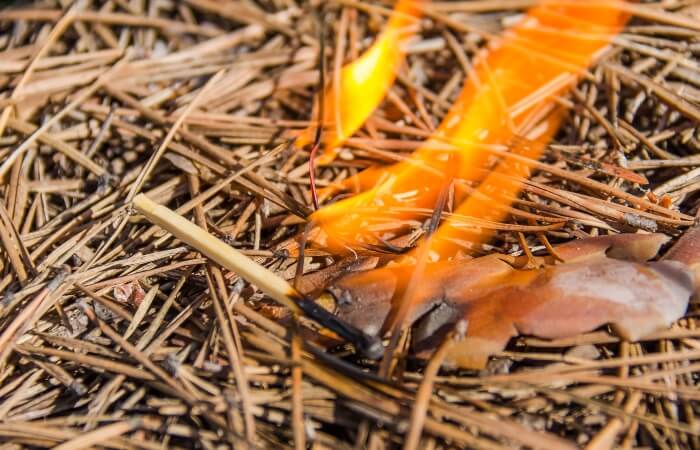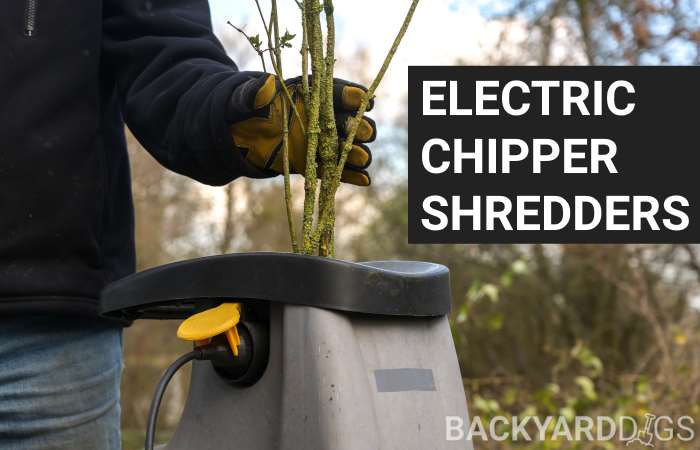Keeping your yard beautiful is every homeowner’s goal, including adding mulch to tired-looking garden beds. But should you remove old mulch before adding a fresh layer?
In general, you do not need to remove old mulch. You can add new mulch right over the top of old mulch and refresh the protection it offers your plants, shrubs, and trees!

In this guide, you’ll learn why and how often your mulch needs replacement, which mulch is best, and how to calculate your required quantity.
Learning to manage mulch correctly keeps your yard looking neat and attractive, so stay here for my best advice!
How Often Should You Replace Mulch
You need to replace mulch when it breaks down too much to do its job. If the mulch layer becomes fine and thin, it can’t protect the soil and plant roots from the elements.
You may also need to replace mulch if heavy rains or winds wash the mulch away, exposing the soil underneath.
In rare instances, the mulch may need replacement if it becomes a haven for pests or fungi that take over the material and won’t go away through topical treatments.

However, many people like to replace mulch when the color fades, making your landscape beds look shabby.
Fading can happen within 6-12 months, long before most mulch needs a replacement for functional reasons.
If you’re unsure about adding mulch around your plants, here is a list of the benefits and disadvantages it offers:
Mulch Pros
- Deters weed growth
- Retains soil moisture
- Insulates soil against temperature extremes
- Reduces soil erosion
- Adds organic matter to soil when it decomposes
- Makes landscape plantings stand out and improves overall appearance
Mulch Cons
- Needs regular replacement as it breaks down
- Color fades
- Takes effort to buy, deliver, and spread
In most instances, there’s no need to remove old mulch before laying down new. Mulching with organic material helps condition the soil as it breaks down.
Removal of old mulch should only be necessary if something is physically wrong with the current mulch or if you want to change the color or texture for aesthetic reasons.
How To Tell If You Mulch Needs To Be Replaced
You Can See The Soil Surface
The most obvious sign you should replace mulch is when you see the soil surface where the mulch was previously applied.
Lack of mulch could be from washing away during heavy storms or from a pet or local wildlife digging out the mulch to reach insects or small rodents hiding inside.
Mulch Material Is Thin And Crumbly
Mulch that appears very fine and thin is another sign you need to add or replace the mulch. Mulch made from organic materials, like wood or bark chips, will break down from weather and soil microbes.
As the mulch decomposes, it will slowly lose volume and crumble into smaller pieces and fine particles. When mulch reaches this point in its lifespan, the once thick layer of mulch will only be an inch or less deep.
Whenever a layer of mulch shrinks to under two inches, it becomes much less effective in stopping weed growth or creating a barrier over the soil to retain moisture and regulate temperature swings.
The Mulch Houses Pests Or Fungi
Sometimes you’ll find a section of mulch infested with ants, fungi, or other detrimental issues, and dousing the area with pesticides, fungicides, or weed killer isn’t working or may harm nearby plants.
Instead, it may be best to shovel out the offending mulch, carefully treat the soil, and then apply a new batch.
Mulch Color Has Faded
Lastly, if you find the color of the mulch unappealing after it weathers for several months, you can add more mulch on top to freshen the look, but this is only a cosmetic need and not for plant and soil protection.
It’s beneficial to fluff up your mulch as part of your usual gardening chores. Running a garden cultivator over mulched areas helps loosen and break apart mulch material that has settled or formed a crust on the surface.
Turning over and fluffing the mulch allows more oxygen and water to penetrate through the material to the soil, which aids in plant growth. Cultivating the mulch will also turn over bits that haven’t been sun-faded, so your planter beds recover some lost color.
Another good reason to rake through mulch is to loosen any weeds trying to take root.
Should You Replace The Same Type And Size Mulch?
What type, size, and texture of mulch you choose to replace old mulch is a matter of personal preference.

If you’re redoing all your planter beds with several inches of new mulch, it will look uniform no matter what mulch color or type you choose. However, if you’re only touching up some areas, it’s best to stay with the original mulch type so it blends in better.
It does pay to look at problem areas where mulch replacement is an ongoing issue due to erosion from water flow after storms or foot traffic from people or pets.
In problem areas, it’s often much better to use rubber mulch instead of mulch made from wood, bark, or cocoa bean hulls.
Rubber mulch is made from recycled rubber items like old tires and is much heavier and weather-resistant than standard mulch options, so it won’t wash away or fade.
Lastly, think about the color of the mulch and how it affects the curb appeal of your home.
Common mulch color options include:
- Dark brown
- Light brown
- Red
- Black
- Cedar
- Natural
Black mulch is very dramatic and makes all your shrubbery and flowers pop, while sticking to a natural wood tone will age well and give your home a more rustic vibe.
Be aware that colorants are used to achieve red, dark brown, and black mulch and these colors are the fastest to fade if you use wood mulch versus rubber mulch.
Cedar and cypress mulch are the longest-lasting wood mulch options and are ideal if you want a low-maintenance garden.
How Much Mulch Will You Need To Do The Replacement
So you’re ready to add more mulch to your yard but aren’t sure how much you need to buy? No worries, you can do some quick calculations using a measuring tape to find the quantity you need.
Measure the width and length of all areas you plan to mulch and find the total square footage for all the sections. After that, you can plug in the data to a mulch calculator without having to do loads of math in your head.
Using a mulch calculator allows you to quickly choose the depth you wish the new mulch to be. For example, maybe you’re starting over bare soil and want four inches of mulch, or you only need an inch to top off your planter beds.
Plugging in your square footage and depth dimensions will give you the total cubic feet of mulch you’ll need to finish the job.
Most calculators also give you the option to add in the price per cubic foot, meter, yard, liter, or various bag sizes of mulch so you have an idea what the total cost will be.
Mulch is key to reducing weeds and keeping plants healthy. It also dramatically improves the look of your yard, garden, and home, making it an affordable way to add value to your property.










